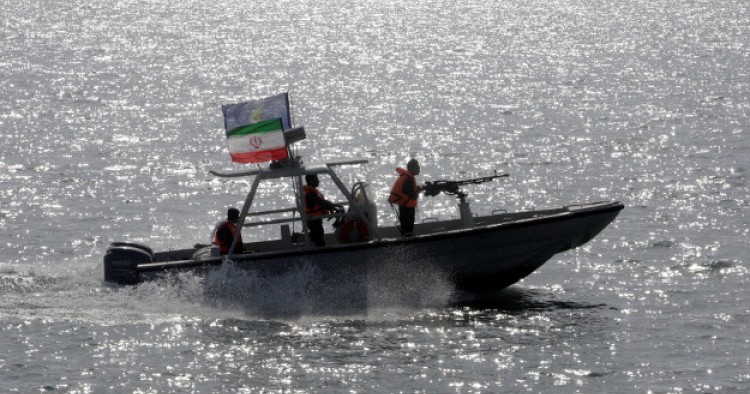The Iranian Navy has deployed its newest warships, missile systems and Special Forces units to the Caspian Sea for a five-day naval exercise, the Iranian media reported. The naval drills codenamed “Lasting Security and Authority 96” began on Sunday and reportedly cover an area wider than 88,000 square kilometers. The commander of the Navy’s Northern Fleet, Captain Ahmad-Reza Bagheri, said the drills aim to enhance Iran’s naval capabilities at the Caspian Sea. According to Bagheri, the exercise is part of multi-stage drills that aim to enhance the Iranian naval forces’ capabilities by practicing scheduling and planning, naval drilling, battles against mock enemy forces, new warfare tactics, and joint operations comprising vessels, aircraft, coastal and seaborne operational units and logistical teams.
Separately, Amir Mahmoud Mousavi, the deputy chief of naval operations of the Iranian Army, said the Navy will test its new equipment and weapons such as shore-to-sea missile systems, surveillance and intelligence systems, commando operations. The Iranian Army also deployed fighter jets and air defense systems to provide security for the exercise.
Comment: Iranian leaders often exaggerate about the country’s power and capabilities, particularly its naval assets and their presence in international waters. But it is clear that the Islamic Republic has put increased emphasis on developing its naval capabilities in recent years. Sanctions relief from the lifting of nuclear-related international sanctions in January 2016 also appears to have helped Tehran to invest more on its Navy, including on warships and submarines.
In February, Iran’s Defense Minister Brigadier General Hossein Dehghan said that his country should begin using nuclear technology “in the field of naval propulsion systems” in order to enhance the Iranian Navy’s “maneuvering power and capability.” And late last year, the Iranian chief of staff of the armed forces, Major General Mohammad Hossein Bagheri, called for setting up naval bases in Yemen and Syria – triggering alarm among Sunni Gulf states, which are already concerned about Iranian expansionism in the region.
The Iranian naval forces have also broadened the geographical scope of their operations. Earlier this year, Iranian Navy Commander Amir Habibollah Sayyari announced that the Iranian naval forces were making efforts to expand their presence and boost security in the Gulf of Aden, the Red Sea, and the Bab al-Mandeb. He also claimed that his forces, “equipped with advanced military systems,” were proving to be a “powerful presence in the international waters” of the African continent.
U.S. Navy commanders repeatedly express the concern that Iranian naval forces are disrupting international navigation by “harassing” warships passing through the strategic Strait of Hormuz. They have also warned that Iran’s provocative naval maneuvers increase the chance of miscalculation and unintended confrontation in the Gulf region. Most of maritime hostile actions are committed by the naval forces of the Islamic Revolution Guards Corps (I.R.G.C.). Iran’s regularly Navy is separate from the I.R.G.C. Navy.
The Middle East Institute (MEI) is an independent, non-partisan, non-for-profit, educational organization. It does not engage in advocacy and its scholars’ opinions are their own. MEI welcomes financial donations, but retains sole editorial control over its work and its publications reflect only the authors’ views. For a listing of MEI donors, please click here.













